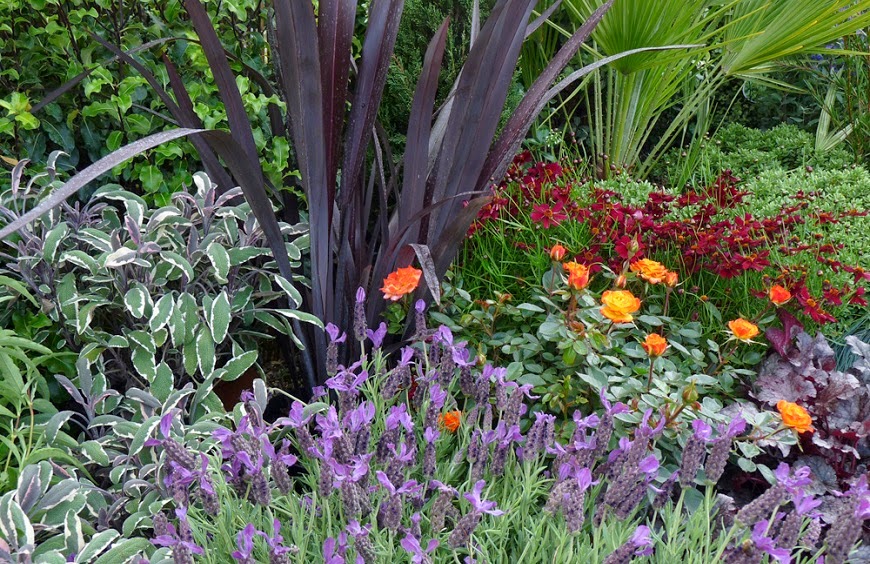More and more people are turning to backyard gardening with a view to growing their own crops and becoming more self-sufficient. One area that has seen great growth is the organic vineyard. Having a small-scale vineyard is a bit different than growing a few bunches of table grapes, although the practices are similar.

The process is initially laborious, as you will have to choose a location, prepare the soil and place the structures that will support the vineyard, but if you take great care during these steps, the end result will be worth it.
That said, growing a vineyard in your yard is not as daunting as it may sound. Any labor of love requires a certain amount of research and work. While there are many books on the market that can help you with this endeavor, you’d better spend your time talking to other local producers, and learning what obstacles they have faced and what tricks they have learned. A trip to local farmers can also be invaluable, as you will have insight into the types of grapes that grow best in your area. You will also have information on how to treat local pests and diseases.
Growing an organic vineyard.
If your plan is to make your vineyard really ‘well done’ for the sake of marketing your product in the local organic market, check with your own local legislation to find out what constitutes organic in your region. A vineyard will undergo a testing and approval process before an organic certification can be awarded.
Generally speaking, you should avoid using synthetic products, such as fertilizers, soil supplements, pesticides, herbicides, and antibiotics. The soil where your vineyard grows will have to be free of these prohibited products for 3 years or more, as these chemicals can leave long-lasting residues in the soil.
Genetically modified seeds cannot be used and you will need to keep detailed records of your production and sales methods. If you are growing other non-organic crops, they should be separate from your organic crops. To become organic certified, you will undergo regular testing and recertification to make sure you are still following organic practices. This can be an expensive and time-consuming practice for the backyard gardener.
Growing a sustainable vineyard.
Similar to organic farming certifications, but less rigid, is the option to grow sustainably. This may be more suitable for most backyard vineyards as there is no legal definition or certification process involved. Organic methods can still be used, but a sustainable vineyard also incorporates energy and water conservation practices, as well as allowing the owner to make choices about what works best in his vineyard.
11 steps to starting your own backyard vineyard.
1. Choose a location.
There are many things that have to do with choosing the right place for your vineyard. The most important factor is that the entire vineyard can receive at least 8 hours of sunlight each day. Look for obstacles such as trees, hedges, and buildings that may prevent this requirement. Without the 8 hours of sun, the plants will not thrive and the grapes will be less and of inferior quality. While the vines in your organic backyard vineyard can grow well in hilly terrain, it will make harvesting, pruning, and maintenance more difficult. Try to choose a flat terrain to facilitate the care of your plants.
2. Check the soil.
Grapes aren’t too particular about the soil they grow in, but to get the most out of your organic vineyard, you’ll want to look at the type of soil and its ph. The vines prefer a neutral soil. That’s a soil with a pH of around 7. You can dig a hole in the area where you intend to plant and then scrape down the sides of the hole.
Put it in a plastic zipper, sandwich bag. A home soil test kit can quickly tell you what its pH level is, or you can contact your agricultural extension office for recommendations on a local soil testing laboratory. Once you have the results, ask for recommendations on any soil treatments you may need to bring the soil’s pH in line with what it needs.
You will also want to avoid heavily stone-laden or clay-type soils, as grapes do not perform well on these soils. If the area has been able to produce healthy vegetation in the past, your vines are probably fine.
3. The size of the vineyard.
The size of any organic backyard vineyard is subjective, but remember that it takes quite a few grapes to make a single bottle of wine. It will take approximately 120 strains to produce enough wine to fill a 60-gallon barrel. To achieve this volume, you will need an area of approximately 15 x 15 meters that meets the sun and soil conditions described above.
4. Choose the grape variety.
To make wine, you will need to choose one or two varieties of grapes that you want to grow. The most important factor to consider here is the climate where your grapes will grow. In places where the growing season is cooler with temperatures averaging 10-15 degrees Celsius, Riesling grapes do well. Conversely, in warmer climates, where average temperatures are 30 – 35 degrees C, Cabernets and Zinfandels are better. In moderate climates where temperatures range from 15-30 degrees Celsius, Merlot, Cabernet, or Chardonnay are likely to thrive.
5. Install the trellis system of your choice.
A trellis is a structural support for the vine. The type of trellis you choose will depend on the location, the type of soil, the growth habits and the number of vines and the spacing between the plants. The goal of the trellis is to provide all the vines with access to the sun for the 8 hours they need and a good flow of air between the vines.
A fence style trellis is most popular with backyard grape growers. Allows vines to easily wrap around posts and rails. The fence should provide ample space between the rails and the posts so that as the vine wraps around them, it still has access to sunlight and water. Pruning and harvesting are easily accomplished with this design because you can work from both sides of the trellis.
6. Water supply.
The vines will need to be watered regularly. The water from your garden hose is sufficient in most cases, but if what you are looking for is truly organic, you may want to have the water tested. A drip irrigation system is the most efficient and effective way to ensure that your organic backyard vineyard receives the right amount of water at the right time. A drip irrigation system will deliver water to the roots where it is most needed and leave the vines and fruit dry, thus preventing mold, mildew and rot problems.
7. Plant your vines.
The hole to plant your new vines is fairly universal in all types of grapes at about 8 inches deep. The space between the plants is a bit more complex. Considering that plants need room to grow so they can receive good air flow and sunlight at all times, the only determining factor is the type of soil.
In a dry and arid region, plants can be 1.20 to 1.80 meters apart in their rows. If the soil is fertile and the climate is warm with plenty of water, there will be more vigorous growth and you will need 1.80 to 2.40 meters between plants in the same row. Row spacing has to do with maneuverability and preservation of those 8 hours of sunshine. If your trellis is 1.80 meters high, for example, you will need a minimum of 1.50 meters between rows to prevent one row from casting a shadow over the next. This distance also allows you to have free movement between the rows for harvesting and maintenance purposes.
8. Training the vines.
Once the vines are planted, the next step is to train them to grow on the trellis. The vine needs a strong, straight trunk and a healthy root system. As it grows skyward, wooden stakes can be used to support the young vine. Cutting weaker shoots will allow the plant to put in more energy to make the trunk grow straight and strong.
Do not tie the main log to anything, as rope or plastic ties can become embedded in it as it grows. As the vine reaches the fence lines, new shoots can be gently tied to the rails or wires to encourage them to spiral around the supports. Once attached, the ropes or plastic ties can be removed.
9. Prune your vines.
The first year is the most important for the organic garden vineyard when it comes to pruning. This is when the permanent conformation is created. New plants usually come with 2 to 3 active shoots. Some growers prefer to let the vine grow naturally for the first year so that they will have more than one selection the following year when the vines are picked for maintenance or pruning.
One possible downside is that the plant can get bushy in the first year and not get adequate air and sunlight. Use discretion when pruning during the first growing season.
During the winter, the vines will lose all their leaves and become dormant. Thereafter, the vines are called reeds. One of these will be chosen to establish the main trunk. About a month before spring arrives, trim the plant so that it has only 1 or 2 strong canes. Secure your log pole to the training post and trim off weak or unwanted shoots. This season, you will need to allow 4-6 healthy shoots to develop.
During next year’s dormant period, you will trim these canes to just 2 and train them horizontally along the fruiting wire or rail. These two rods should produce 8-10 new shoots that need to be trained for the other 3 cables or rails. These could potentially pay off in the following season. After this, you will only have to monitor them for damage or disease and prune accordingly. A good pruning should be done about once every three years after that.
10. Control of pests and diseases.
Pests and diseases will vary from one part of the country to another. For the first few years, before fruiting begins, this is not too much of a problem. Both problems can be solved by practicing good canopy management. All the stems, leaves and bunches of grapes that grow from the 2 main canes make up the canopy.
Throughout the summer, you’ll want to slim down and position these components so that the entire canopy has good airflow and receives the right amount of light. This can prevent many fungal diseases that can take hold when vines are overcrowded.
Check with local growers and your extension office for organic measures you can use to combat local insect populations. Remember that not all insects are bad. You will need to assess their presence and determine if their number is excessive or causing damage. When it comes to birds, the mesh over the vines can protect your fruit.
11. Harvesting the grapes.
As a new producer of organic backyard vineyards, it will take a few years for you to make your first harvest, but those first sweet grapes will be the reward for your years of work. Winemakers should plan to pick bunches of grapes that are fully ripe and disease-free in the early hours of the morning during the month of August.
You will have to keep the container where you put the harvested grapes free of leaves, twigs and other debris that could damage the fruit. In order to get the harvest at the same time, you may want to invite some friends and family to help you. Store the harvest in a cool, shady place until you are ready to make your wine, if desired.








